“Hi, I’m Megan’s mom.”
This is how we are introduced to Kris during the first episode of Born This Way, a six-part documentary series about adults with Down syndrome on A&E. Kris is the single mother of twenty-two-year-old Megan, who has Down syndrome. A producer off-screen asks, “And what is Megan’s mom’s name?”
Kris laughs at what seems to be a common mistake, and repeats, “I’m Megan’s mom. My name is Kris. When she was born, I became Megan’s mom.”
I am “Ashley’s sister,” the older sibling of a young adult with an intellectual disability. As a twenty-four-year-old who always looking for the next television show to binge, I felt like I couldn’t not watch Born This Way. What I did not expect was to see myself reflected in the diverse group of parents and siblings that circled on the periphery of the main cast. While I’m still trying to figure out how to do my taxes and best consolidate my student loans, I also find myself thinking ahead to when I’ll become the caretaker Ashley will need long after most adults achieve complete independence. It’s a job that nobody seems to know how to prepare me for. I read all of the time about caring for aging parents, but who talks about an aging special needs adult child? Born This Way is finally trying to do just that.
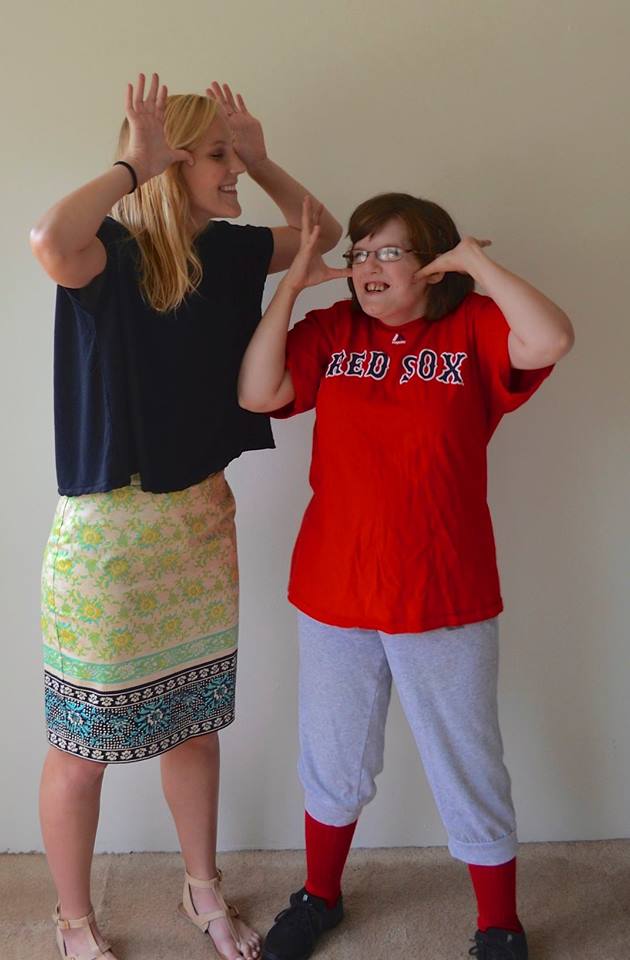 My sister, Ashley, does not have Down syndrome, but she was born with a rare intellectual disability called Trisomy One, caused by a malformation of her first chromosome. Ashley, who is twenty-two, is similar to the cast of Born This Way in many ways. She cannot drive a car. She cannot work a normal, full-time job without supervision. She is under the care of two guardians, my parents, who oversee her health care, her finances, and her schedule. Like Megan and the rest of the cast, Ashley attends a government-financed program for adults with intellectual disabilities. She participates in Special Olympics bowling, snowshoeing, and basketball, and attends a special needs dance class run by a local dance company. Ashley is interested in boys, and will eat cheese with every meal if she can get away with it. She loves to imitate our mother behind her back, and insists on having her “eyes and lips” done for every party or dance recital or work event.
My sister, Ashley, does not have Down syndrome, but she was born with a rare intellectual disability called Trisomy One, caused by a malformation of her first chromosome. Ashley, who is twenty-two, is similar to the cast of Born This Way in many ways. She cannot drive a car. She cannot work a normal, full-time job without supervision. She is under the care of two guardians, my parents, who oversee her health care, her finances, and her schedule. Like Megan and the rest of the cast, Ashley attends a government-financed program for adults with intellectual disabilities. She participates in Special Olympics bowling, snowshoeing, and basketball, and attends a special needs dance class run by a local dance company. Ashley is interested in boys, and will eat cheese with every meal if she can get away with it. She loves to imitate our mother behind her back, and insists on having her “eyes and lips” done for every party or dance recital or work event.
An estimated seven to eight million people in America have intellectual disabilities, including Down syndrome, Autism spectrum disorders, genetic disorders like Trisomy One and Fragile X syndrome1. Born This Way makes an effort to develop each character and give them a plot line that reflects issues most adults, with or without disabilities, can relate to. But more importantly, the show also touches on a side of the story that is even further unexplored: the role of the family. Seventy-one percent of people with intellectual disabilities live with a family caregiver, and only thirteen percent of these families are supported by state I/DD (Intellectual/Developmental Disabilities) agencies2. The National Alliance for Caregiving estimates that there are “11.1 million caregivers ages eighteen and older who provide unpaid care to an adult family member or friend who is eighteen to forty-nine years of age”3.
In the first episode, we see Cristina, Elena, and John, close friends through their after-work program, New Horizons, in the backseat of a van headed to an afternoon of bowling. While the three make jokes at one another’s expense and discuss their upcoming weeks, the camera pans to the outside of the van, where, in the driver’s seat, we see just the arm of the driver, presumably one of their parents. And then they arrive at the bowling alley, and gather around two lanes to sort out teams. Though we don’t see them, the adults are still there, just off camera, ready to pay for the strings and shoe rentals, and to drive everyone home at the end of the night.
For every scene featuring the adults with Down syndrome, the audience is also given an anecdote with the parents. While John bowls with his friends, the camera cuts to an interview with his mother and father, who talk about his desire to live in a house by himself and have a girlfriend. When Cristina invites her New Horizons friends over for dinner, Cristina’s mother tells the audience about her daughter’s long-term boyfriend, who also has an intellectual disability. Later, the parents sit outside at the table where earlier they had served their daughter’s guests, and in her absence discuss her boyfriend and the couple’s desire to be independent. So too, when we see the adult children at their after-work program at New Horizons, their banter with one another is juxtaposed with interviews of their parents. While Megan tells her new friends about her desire to be a movie producer, her mother talks to the camera about how she has taken a summer away from their home in Colorado to bring Megan to Los Angeles, reminding us that though her daughter may have a new program where she can make friends, Kris has temporarily uprooted her life in order to help her daughter fulfill her dreams.
According to their website, New Horizons, a nonprofit for special needs adults, has been around since 1954, and currently provides services for more than a thousand adults with intellectual disabilities in Los Angeles, and has recreational services for over three thousand individuals. It helps with work placement, job training, and after-hours care. It is one of hundreds of programs across the United States that help special needs adults transition from special education programs in school to the adult working world. Unfortunately, these programs are small, serving only a fraction of the disabled population in that region. Furthermore, they often found in large cities, so families in more rural areas may have no support at all. In 2014, only 17.1 percent of adults with disabilities were employed4. Day programs like the one at New Horizons, and like the one my sister attends in New Hampshire, called LIFE-OP, often have waiting lists that can stretch several years long, due to low funding and high demand. In the meantime, families are forced to shell out their own money for services, by one estimate, an average of $326 per month5. Only fifty percent of caregivers of adults with intellectual disabilities were employed in 2009, and 75 percent of those employed said that they had to adjust their work schedule or take time off in order to provide caregiving3.
Nobody talked to me about what happened when my sister grew up until I was headed off to college. My mom recalled a conference she went to for families of disabled children, where a presenter held up a bunch of balloons, each with things like “college,” “marriage,” and “grandkids” written on them. Then, one by one, she popped the balloons.
“Say goodbye to these things,” she told the parents, including my mother, who was there on my sister’s first birthday, only a few months after she was diagnosed with Trisomy One. Of course, these limitations are not true of all adults with intellectual disabilities, as shown by the cast of Born This Way. They talk about moving out, having jobs, maybe even getting married. In one episode, Sean, a self-described “ladies man,” tells the audience about how he wants to have his own house. In the next scene, his parents tell him they are planning to move out of their large home, because they are retiring and need to downsize. Upset about this change, Sean suggests that he can keep living in the house after they move out. In another episode, Cristina’s boyfriend asks her father if he can give Cristina a promise ring, because eventually he wants to propose to her. The couple dreams of having their own place one day. It isn’t clear how independent the two could be, but their situation is the rarity amongst the cast, not the norm. Most will live with or near their parents for the rest of their lives.
At one point, Kris, Megan’s mom, says to another mother, “But what happens when I’m gone?” For Kris, and other parents of adults with intellectual disabilities, this is a critical question. As they age, the responsibility of caretaking falls on siblings, if there are any, other family members, or the government. Currently, fourteen percent of familial caregivers for adults with intellectual disabilities are their siblings3. As a sibling, I have asked these questions myself. My parents are still alive, but they are both nearing their late fifties.
Recently, my mother developed a chronic condition that has forced me to think about what my life will be like when my parents are gone, and it is just Ashley and me. My sister is fortunate enough to have relatively good health, and has the potential to live a long life, like many of the adults featured on Born This Way. In five years or twenty years, I will be stepping in my parents’ shoes. I will be in charge of my sister’s finances, her healthcare, and her daily activities. I will need to seek out services that help Ashley be involved in her community, and adapt my working life to handle my sister’s needs. And I am not alone. The life expectancy of those with Down syndrome is around sixty. Likewise, the prevalence of certain intellectual disabilities is increasing. One in 691 children is born with Down syndrome in the US every year6. The rate of autism spectrum disorder diagnosis has increased steadily over the past twenty years, and is now one in sixty-eight7. At the same time, the average age of a caregiver is forty-five3. For those families with children who have intellectual disabilities, when the parents grow older, the responsibility often moves to siblings.
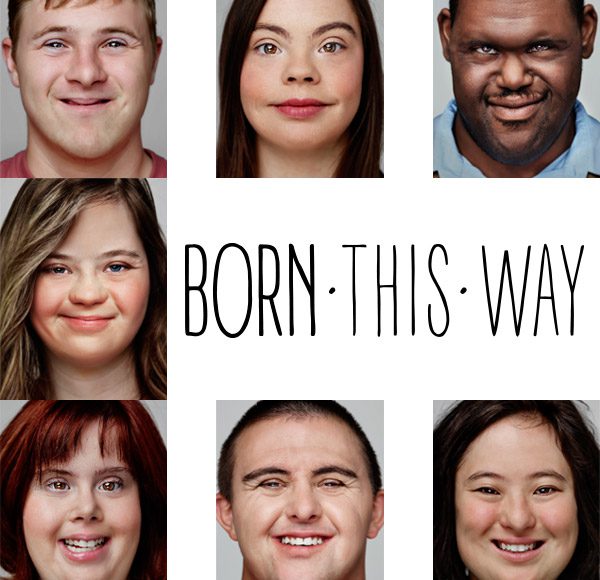 I am glad that there is a show that addresses the role of the family, because it is not something people are talking about enough. In the next couple of decades, the number of adults with intellectual disabilities in the United States will be higher than ever before, and we need to be prepared to provide them and their families with work and education programs, assistance, and community involvement. There is not enough government support to provide adequate services to the current population of adults with intellectual disabilities, and I don’t think enough people are talking about what happens when a child with disabilities leaves the relative sanctuary of the school system and enters the adult world. The seven main characters of Born This Way demonstrate over and over again that they want and need the sort of programs provided by New Horizons.
I am glad that there is a show that addresses the role of the family, because it is not something people are talking about enough. In the next couple of decades, the number of adults with intellectual disabilities in the United States will be higher than ever before, and we need to be prepared to provide them and their families with work and education programs, assistance, and community involvement. There is not enough government support to provide adequate services to the current population of adults with intellectual disabilities, and I don’t think enough people are talking about what happens when a child with disabilities leaves the relative sanctuary of the school system and enters the adult world. The seven main characters of Born This Way demonstrate over and over again that they want and need the sort of programs provided by New Horizons.
As I watched this series, in my mother’s apartment during my last winter break of my last year of graduate school (instead of working on my thesis), I felt like I was being given a glimpse into the world I would soon occupy. In this world, I was not the center, like I always imagined, but a vital piece just on the edge. Because, I, like Kris, have already come to define myself in terms of Ashley. It took leaving home and coming back again to see it, but I have always been Ashley’s sister, ever since she was born. This is an identity that will most likely bind us together more tightly as our parents age and Ashley remains dependent, an identity that will shape where I live, what I do for work, and how I spend my time and my money. As I approach my graduation from my Master’s program, try to figure out my taxes, and apply for my own independent health insurance for the first time, I find myself looking for guidance for how to prepare for caring for another adult—one with far greater needs than my own.
***
1. U.S. Department for Health and Human Services: Administration on Intellectual and
Developmental Disabilities. (2016). The President’s Committee for People with Intellectual Disabilities Fact Sheet. Retrieved from http://www.acl.gov/programs/aidd/Programs/PCPID/.
↩
2. State of the States.Org. (2014). Total Public I/DD Spending for Services: FY 1977-
2013. Retrieved from http://www.stateofthestates.org/documents/UnitedStates.pdf.
↩
3. National Alliance for Caregiving in Collaboration with AARP. (2009). Caregivers of
Younger Adults: A Focused Look at Those Caring for Someone Age 18 to 49. Retrieved from http://www.caregiving.org/data/Report_Caregivers_of_Younger_Adults_11-12-09.pdf.
↩
4. United States Department of Labor: Bureau of Labor Statistics. (2015). Economic
News Release: Persons with a Disability: Labor Force Characteristics Summary. Retrieved from http://www.bls.gov/news.release/disabl.nr0.htm.
↩
5. SpecialNeedsPlanning.Net. (2014). Statistics: Reasons for Special Needs Financial
Life Plans. Retrieved from http://specialneedsplanning.net/statistics/.
↩
6. National Down syndrome Society. (2016). Down syndrome Facts. Retrieved from http://www.ndss.org/Down-Syndrome/Down-Syndrome-Facts/.↩
7. National Autism Association. (2016). Autism Fact Sheet. Retrieved from http://nationalautismassociation.org/resources/autism-fact-sheet/.↩
***
Image credits: featured image and image 2 provided by author, image 3, image 4, image 5.
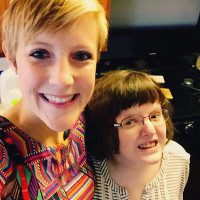
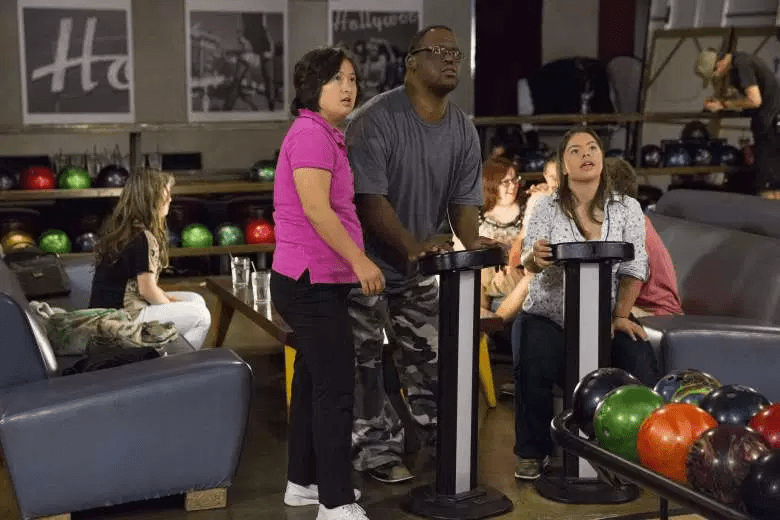
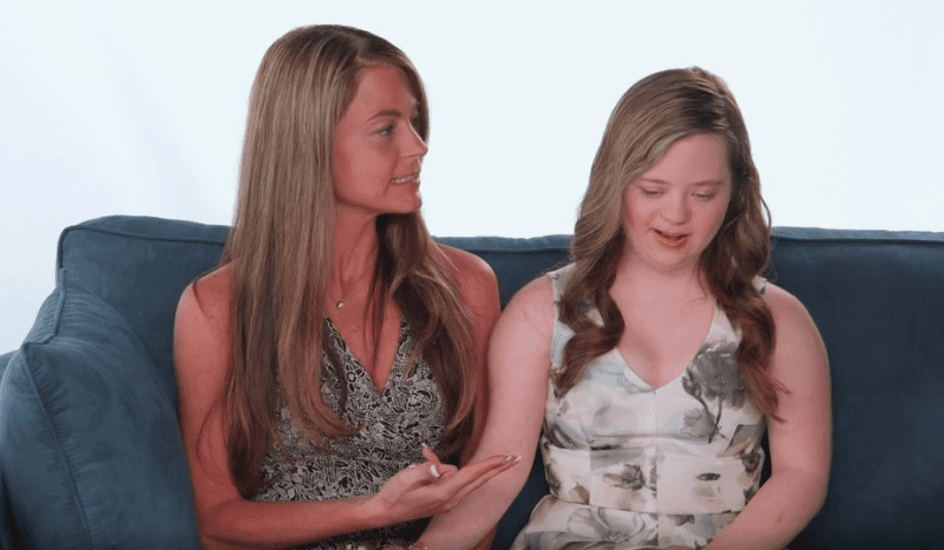




4 responses
Beautiful essay, Christina. Ashley sounds like a wonderful person, and I wish you all the best as you both grow.
I love this show when it first came on I start watching it the show it heart warming love the show
I love this show. Besides being informative (I’ve learned a lot & I’m 70) Hoping this is picked up as a regular time slotted show as more people who see it will understand & connect to the cast as they all have different problems, but work extra hard to reach their goal. All are truly an inspiration. Kind of hoping Megan & Steven become a couple. As for all the parents my hat goes off to you for a job well done in raising your children to be the best they can. Cast & parents you must be very proud of yourself. Wishing only the best.
Great writing! I have a feeling that no matter what life throws at you, you & Ashley will be just fine. As much as you are ‘Ashleys’ sister’ – please do not forget that YOU matter & to take time once in a while to be ‘an individual’ with her own needs.
Best of luck & much happiness to you & your sister, Ashley, who is lucky to have you for a sister.
Click here to subscribe today and leave your comment.